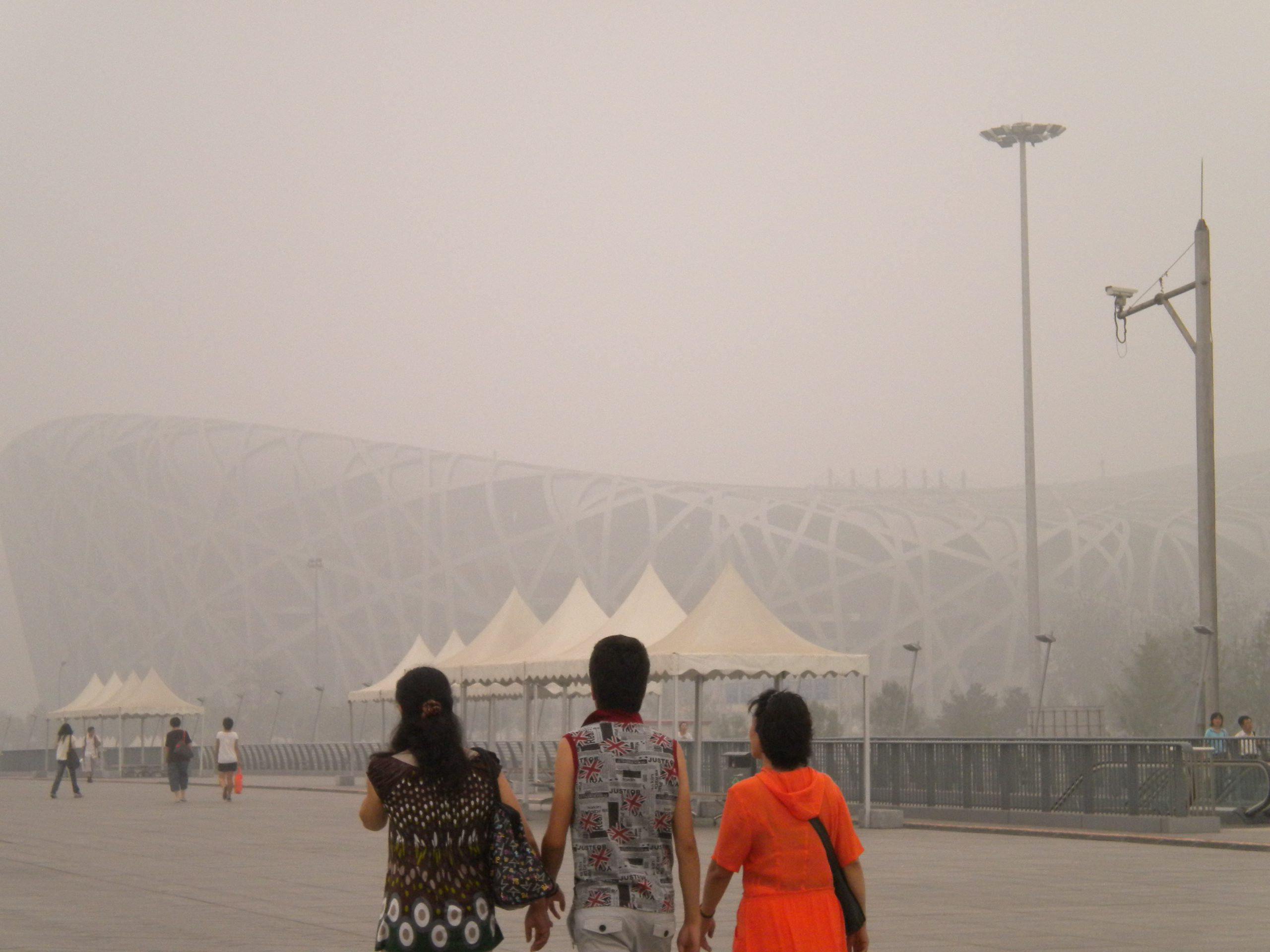Following the massive institutional and market failures associated with the global financial crisis and Hurricane Sandy, it is clear that all countries, including China, urgently need new and different metrics for assessing their exposure to economic risk.
It is simply too expensive and disruptive for economies to be repeatedly hit by unexpected disasters which catch their populations, policymakers and investors by surprise and cause catastrophic losses.
One entrenched problem with business-as-usual is that the dominant framework for making decisions – economics – largely ignores or downplays whole categories of information, expertise and risk; especially, if they do not happen to come in dollar units.
Economics therefore needs to find new ways of integrating additional categories of risk and expertise into its decision-making processes, so that the resulting decisions are less vulnerable to flattering failure, and more resilient to risks.
The need for environmental ratings
Credit rating agencies offer a useful clue as to which strategies might work, as their AAA rating scales already help investors to judge the risk of businesses or countries defaulting on their loans, and play a central role in the world economy. The major disadvantage of these ratings is that they are almost exclusively based on short-term economic metrics such as annual costs, profits and growth.
Environmental ratings offer a practical new method for considering additional risks. This is because, many countries struggle to value their environment until it is no longer able to provide them with stable and secure supplies of food, water, air or rainfall.
This widespread lack of regard for essential ecosystem services and natural capital means that environmental data offers an incredibly accurate, meaningful and honest manifestation of a country’s prevailing strengths, weaknesses and risks. As a result, environmental ratings are well placed to highlight signs of weak management, under-investment or high-risk strategies that might otherwise be missed, flattered or hidden by traditional economic metrics, such as profits.
The Environmental Rating Agency (ERA) has set about adapting the traditional AAA rating scale to this end. We award an AAA rating to countries that demonstrate the highest level of environmental performance for a given indicator. This drops by one grade for every 5% decline in performance, with the lowest grade, DDD, representing an environmental “default”.
An environmental “default” has extremely serious implications as it indicates that a country (or company) is failing to manage fundamental environmental risks, with performance that is 95-100% worse than the world’s best. Such a situation strongly indicates that today’s seemingly rational choices are failing to take into account real and tangible risks, and could undermine tomorrow’s economic viability and social stability.
China performs better than Saudi Arabia or India
Last summer, the ERA produced a report assessing the environmental performance of the G20 group of nations, based on 12 environmental indicators: economic efficiency; energy efficiency; infrastructure investment; atmospheric emissions; environmental protection; land management; water resource use; corruption; social development, threats to endemic mammals, birds and amphibians; marine protected areas; and air particulates.
These indicators reflect, in their different ways, the environmental consequences of each country’s own long and short-term actions and choices – not just their natural exposure to environmental risks. Indeed, countries with similar exposures often have different environmental ratings, and vice versa, and based on these ratings can be seen to carry more or less risk than their peers in a variety of important ways.
Overall, Germany topped the G20 league table with an A+, the fifth best rating possible. By contrast, Saudi Arabia came bottom, with many low ratings, including DDD scores for extracting 943% of annual renewable water resources and its cities having urban air quality up to 12 times worse than that found in Sydney. Saudi Arabia’s terrible overall rating indicates that it is vulnerable to severe environmental risks, which could ultimately undermine its future economic viability despite the country’s great wealth.
China came 16th in the ranking, with a BBB- rating, beating South Africa (BB), India (BB-) and Saudi Arabia (BB-). Unlike the latter two, China only had two environmental indicators with very poor ratings, along with a significant number of middle-ranking ratings. These results suggest that, from a low baseline, China is beginning to control its major environmental risks, despite its immense population pressures and industrial growth.
Poor access to data still a problem in China
It is, however, difficult to assess any country based on 12 indicators, especially one as geographically and socially diverse as China. For the G20 report, over 30 different indicators were considered and a major problem limiting this assessment was the lack of standardised and high-quality data from many countries, including China, which lack official transparency and independent sources of third party data.
Also see: Data gaps hobble Chinese carbon trading
Of the 30 indicators initially considered, some of the biggest disappointments included the lack of high quality and reliable data for water quality, heavy metal pollution and pesticide consumption in China and numerous other countries. If these datasets exist, then they should be made publicly available; if they do not exist, then they absolutely should.
It is also worth acknowledging that very little of the most important environmental data is available, or particularly meaningful, at the nanosecond timescales that markets are now used to demanding. Over time, new technologies and additional investments will almost certainly make more environmental data available in real-time. But as of today, plenty of the world’s best available hourly to decadal environmental data is not being used by markets in any way at all. A useful first step for markets would be for them to learn how to integrate this environmental data into their decision-making so that they can take advantage of better data as it comes on stream.
In particular, the ERA hopes that more world-class and comparable environmental data will become available for China, including at the province and city scales, so that best practice and competitive advantages can more quickly be shared, as widely as possible.
Despite the present limitations in the available data, it is obvious that China faces an assortment of serious environmental risks, which may or may not be controlled over the years ahead. If China succeeds in tackling these risks effectively, it is likely to deliver significant social and environmental benefits, both at home and overseas. If it fails, this will likely harm economic growth, environmental viability and social stability, in China and everywhere else.
It remains to be seen whether China’s new leaders will more fully incorporate environmental risks and knowledge into their economic thinking. Doing so would allow them to make not only more sustainable and informed choices, but more competitive and profitable choices too.
China’s scorecard explained:
- China scored its one and only AAA environmental rating for large-scale efforts to replant trees to reduce the threats of desertification and flooding.
- China’s power stations offer only modest thermal efficiency at 32% (A), but are similar to those of France (A+), Australia (A+), Indonesia (A+) and Saudi Arabia (A).
- China’s threatened endemic mammal, bird and amphibian species rating (BBB+) is low, as the country has relatively few endemic species. Nationally, species and habitats could be far more threatened than this indicates.
- Almost 20% of China’s annual renewable water resource (BBB) is extracted. This is high for a temperate nation and implies that pollution, abstraction and climate change risks could grow over time.
- China’s air quality (BBB) is undoubtedly bad by international standards. But it’s less polluted than the industrial cities of India (CCC) and Saudi Arabia (DDD).
- China’s conversion of energy into GDP is weak (BB). China could benefit from increasing its focus on resource efficiency, reducing its reliance on manufacturing and scaling up service industries.
- About 6.4% of China’s territory is officially protected (B). This is low by international standards and reflects intense pressure on land.
- China emits 842 grams of carbon dioxide per kilowatt-hour (kWh, a unit of electricity) (CC) by relying on coal to make most of its electricity. This compares to 56 grams in Brazil, 83 grams in France and 435 grams in the UK.
- China’s only DDD environmental default rating was the result of only 1.3% of the country’s territorial waters being marine protected areas. This suggests China is particularly vulnerable to over-fishing, pollution and extraction of deep-sea marine resources causing local and regional conflicts.
Matt Prescott is founder of the Environmental Rating Agency. You can contact him at [email protected].




